Hand carving wooden doors, porches and window frames with millennial symbols is an art practiced by few, and acknowledged by fewer, yet the homes of Dimitrie Gusti Village Museum in Bucharest are a testimony of its everlasting beauty. What stories do they tell us, spanning centuries? Do we pay attention?
Ashes to ashes, like human flesh, and just as warm to touch, wood and wood carvings have a short lifespan, although carved wooden spears dated to Middle Paleolithic, 300,000 to 30,000 years ago, have been discovered.
Perhaps the first wood carvers were the builders. Or a father who carved a small toy dog to fit the small hands of his son, or a lover who carved a flower out of wood, on which he lay a kiss in the midst of winter. A persistent hand worker with a dream, as wood, as a material, is softer than marble, cracks easier, and is much loved by (many) insects…
I think wood carving began an art when carpenters topped lifting the wood with their bodies, and lifted it with their imagination…
123 households with 60 000 objects from all over Romania, 380 establishments spread over 14 ha of land, not to count the 250 000 archive documents, this is the National Muzeum of Village Dimitrie Gusti in Bucharest, a perfect example of vernacular architecture.
Join me 🙂
Bellow is a Romanian shepherds house from Valea Doftanei Commune, on the curvature of the Carpathian Mountains, where the shepherding tradition goes back to the 14th century. Worth noticing are the frontal, long stoop and the central entrance parlor. The house stands on a foundation built from river stones, hand-picked. You can see the cellar and its door on the left, underneath the ‘day room’. The house is made of fir trees, abundant in the area.
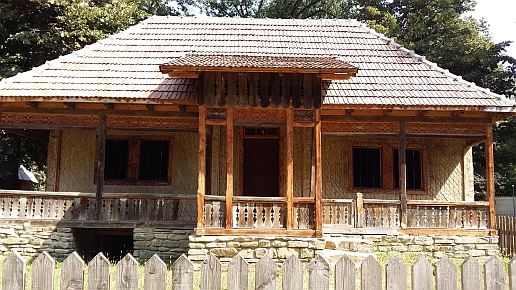
On a closer look, what makes this house so special, except for once having been a home?
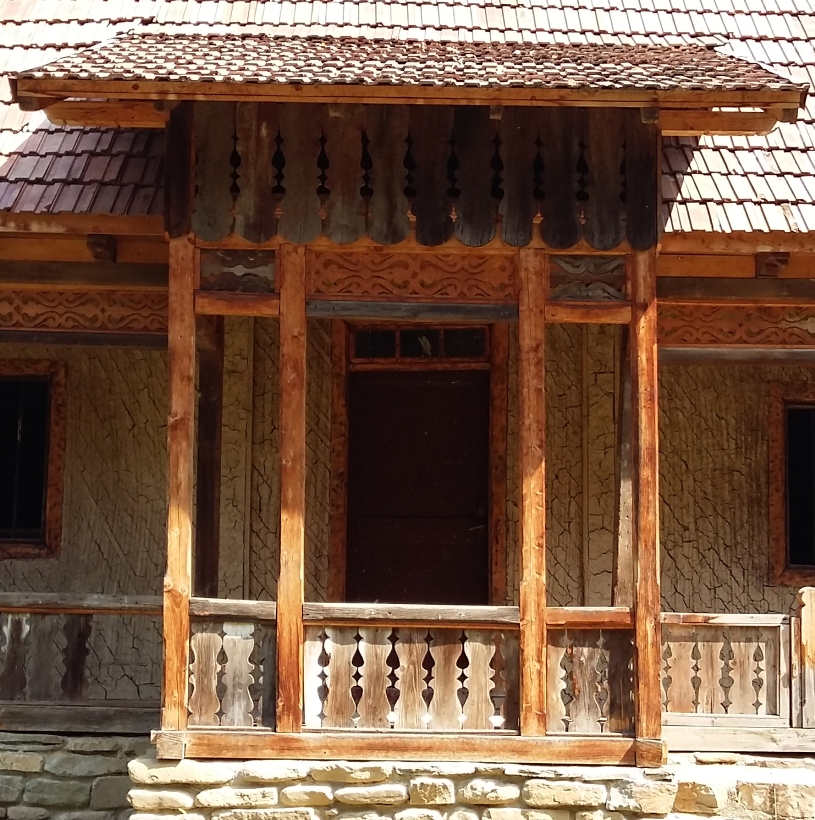
Have the engraved pillars been chosen by chance or the wood artists strolled through the woods until a ray of sun filtered by foliage danced on his face, catching his eye? Had he approached the tree with reverence? Had he run his calloused hands along its ancient trunk, feeling the life inside, asking for permission? Had the design came to him in that moment? Had he drew it on the trunk, in a whisper of apology? Asking for the forest’s blessing? I like to believe he did.
Next, a sleigh for storing and transporting wood during winter, with a door fashioned from twigs and a roof of straws. Child’s play:
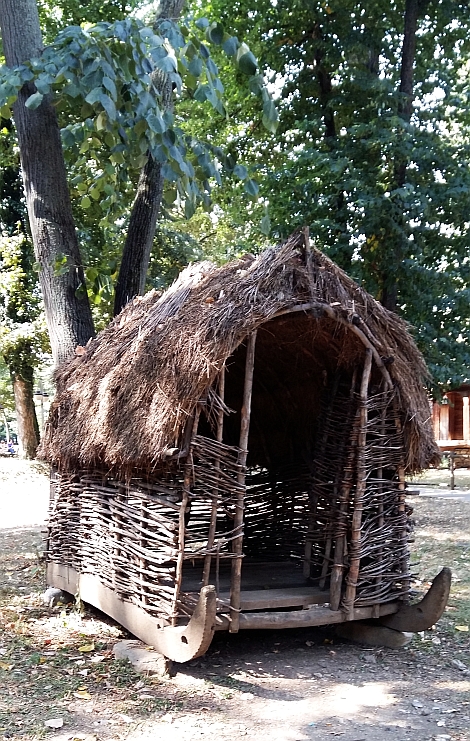
Brownie points if you guess what the image below is. And, yes, it has a door:

It has been transported to the Village Museum all the way from the north of the country, from Breaza, from a hamlet situated at a height of 1 200m together with an entire household that belonged to a family of huțulii (huțanii, hutsuls), an ethnic group living in the very NW of Romania with Dacians origins…
this…
is…
a…
water well.
Because the homes were far and few in between, to keep the wild animals off the households, as well as out of the water wells, both were fitted with a tall fence. A secondary reason was to keep the water clean, as cats do get everywhere… Notice the cross on top, a Christian symbol meant to bless the water… And the slant in the roof meant to aid the snow slide off during the heavy blanketed winters of the North of Romania.
But an artists at heart is such no matter where he was born and to tell a story all he needs are his two hands…
Like in this tell-tale blue of a house with blue doors, blue window frames, underneath the blue sky reflecting the blue waters… from Dobrogea, a fisherman land and home to Danube Delta:
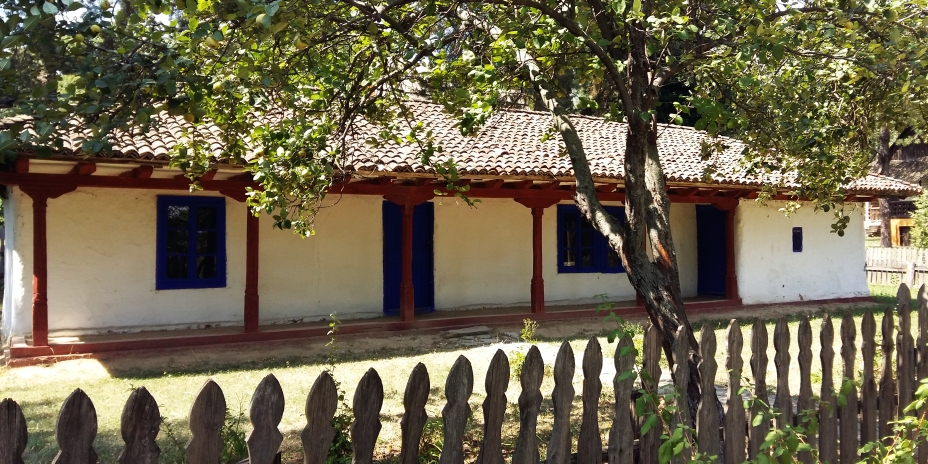
A few more doors and households from the Village Museum:


Love and respect for tradition is what blows life in a carving made in wood.

Even the pen house (above) has a story to tell, a blessing to keep it safe – from beasts, the seen ones from forests, and unseen, from folktales.

And a blessing for the cellar:
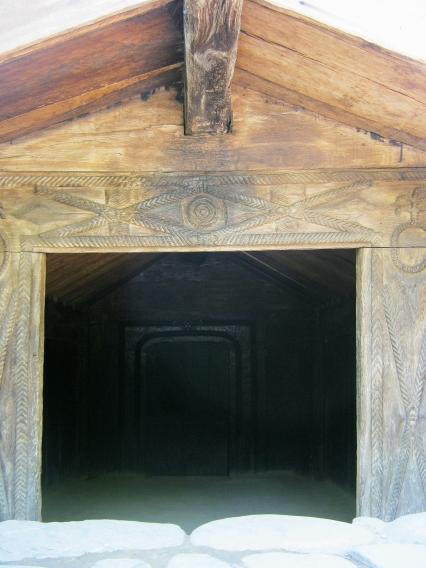
It happened the way it was meant. He had learned the wood carving skill from his father, who had grasped it from his own father, and so on.
But the stories he whispered into the wood, those came from songs, from childhood games and rhymes, from the mountains he’d climbed with the sheep, the streams he drank from, the clouds overhead and the stars, the sun and the birds.
From prayers, said and unsaid.
They were symbols for protection, and symbols to remind him, and his own, of their family. Their history. Their past. For nothing comes out of nothing and no meaningful future is there, without a past.
Between the symbols found in Romanian architecture of the village art are: the circle, the rope, the cross, the star, the sun (purifying the spirit) or the rosette, the moon (as a feminine symbol, assuring the fertility of the home), the tree of life (symbolizing Christ and immortality), the snake, the fir branch, the fir tree, flowers in a vase, wheat or rye, leaves, the horse, the lark, the dove (symbol for soul, taking off towards the Heavens), as well as the human silhouette (alone or in a group), the hand (a barrier against wicked forces), the eye (God’s all-seeing, protector eye), the cross (Christianity, remembering the death and resurrection of Christ).
The rooster, usually placed on top of houses but also carved on gates, is there for protection, remembering the rooster sacrificed when the establishment was built, and buried in the foundation – to ensure its durability.
The snake might derive from the popular belief that each home has its own protective spirit, called the home’s snake. It is said that one should not kill a snake near a home, as to not attract the spirits’ wrath… Now I know that a snake has so many negative connotations, but in the Book of Numbers the copper serpent, Nehushtan, is an archetype of Jesus Christ, offering immortal life to those who believed in Him. The serpent also symbolizes wisdom and prudence.
If you happen to see a Romanian county home and wish to spot any of these symbols, do look at the pillars of gates and wells, search around the gates, doors and windows, as well as above, pay attention to the porches, and on the front side of the roofs.
For a wood carving is a novel.
How many symbols can you recognize?

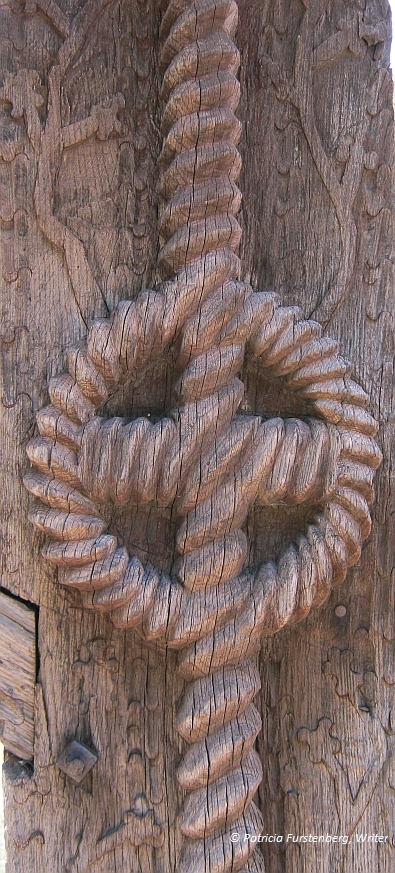
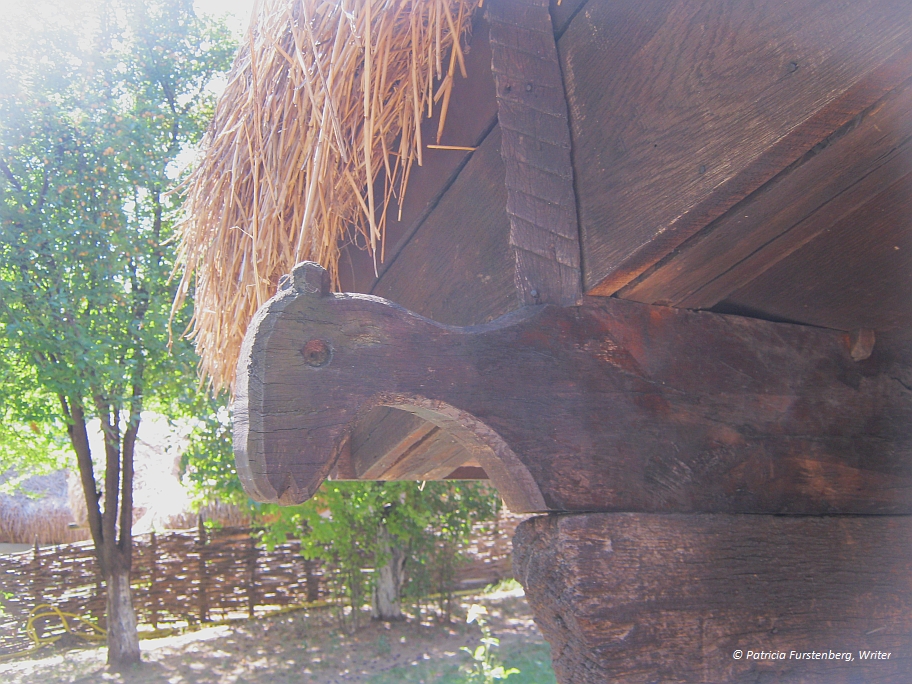
Below, on gate pillars we can see the rope, the star, the rosette (the sun), geometrical motifs, the star, the circle, the tree of life:





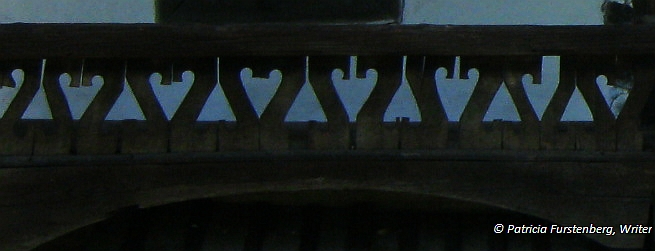

Happy to join Norm’s Thursday Doors with this post 🙂


This is very interesting, Patricia. I would love to visit Romania. The closest I’ve been to this area is Hungary last year. We were due to visit Poland this year but that obviously didn’t happen.
Thank you, Roberta.
I cannot recommend Romanian enough 🙂
Lots of fabulous doors and symbols. I love the covered sleigh and no, I didn’t guess the well!
Wonderful to see you here, Cathy 🙂 Thank you.
We were also thrown by it. Luckily that specific farmstead had a knowledgeable curator, patient too 🙂 He told us the entire story.
Wow. I just love all that well weathered wood and so glad it survived the Soviet / communist era unscathed!
Plenty was lost, but so much still survived 🙂
Thank you so much for visiting.
Fascinating!
You’ve totally spoilt us Patricia
Aww, Sheree, thank you so very much for your kind words and amazing support 🙂
Somehow… the post gets longer and longer… 🙂
Please, don’t apologise. It was all so interesting.
🙂 Hugs
Pat, thanks for the tour of this lovely village. I appreciate the time and effort these artisans took to make even simple things beautiful. I feel that’s often lacking today in a world where everything is about getting things done fast and cheaply. But I also understand that it’s expensive to have someone take the time to do the small, lovely details. However, taking pride in doing an excellent job of even the least expensive home or building is a good thing, one I wish more people would strive to do.
janet
With great pleasure, Janet, and thank you for visiting 🙂
I share your point of view 🙂 The time to create something as good as it can possibly be is missing, so is the will to find it. Should we call it commitment to time?
How much time and how many hands worked on these gates, we will never know. The artists did not signed his work. The rain, the wind and the hands of those who admired it did. And maybe that was enough for him.
I enjoyed reading your comment. Thank you, Janet 🙂 Have a lovely weekend and Happy 4th of July to you and yours!
If everyone put this sort of effort and pride into their work, the world would be a changed place. Have a wonderful weekend, too, Pat.
Beautiful!
Thank you, Gabriela 🙂
My pleasure
Wow. Lots of dedicated work go into carvings like these. The detail in the rope carvings is extraordinary. This was an excellent informative post. Thank you for that and for some fine captures as well 🙂
Many thanks for your visit, Norm 🙂 and thank you for initiating ‘Thursday Doors’.
Fine work going in these carvings, indeed. That rope – all the part symmetrical and equal over and over again…
I imagine that carving such a rope was the final test to pass for this wood artist’s students 🙂
Have a blessed weekend.
I admit that I often look at carvings without trying to decipher the meanings. There is always so much more going on than the eye seee. Thanks for this interesting and informative post.
My pleasure, Mark. I love stuff like this.
Perhaps carvings are like a book cover? 😉 There is more to it than the eye sees.